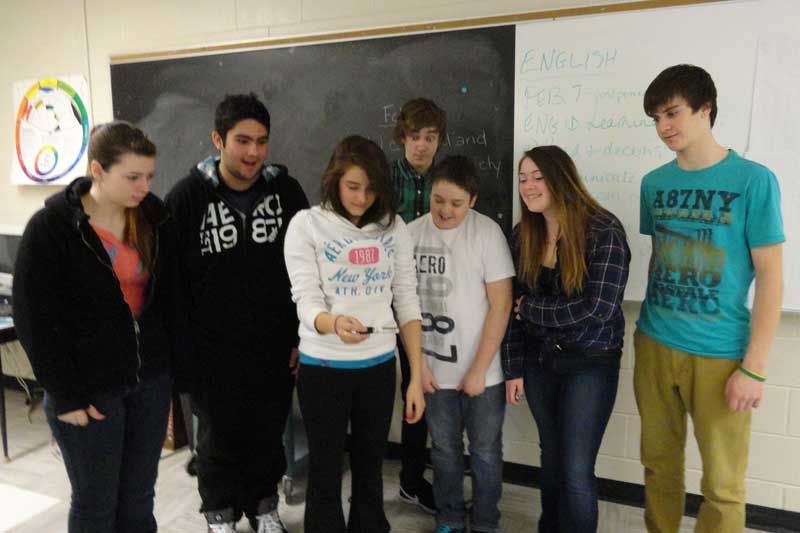Feb 14, 2013
It is not often that local students are presented with an opportunity to work alongside an astronaut - and even less often with an astronaut who happens to be on a special mission orbiting the earth in the International Space Station. But that is the case for grade nine science students at the North Addington Education Centre in Cloyne, who along with students from 250 other schools across the country, will be working alongside the Canadian Space Agency astronaut in a special study to document data comparing radiation levels on earth and in outer space.
Melissa Randle, who heads up the Department of Pure and Applied Sciences at NAEC and teaches science there, will be working with grade nine science students at the school. They will be measuring and recording data collected from a specialized bubble detector, known as a Personal Neutron Dosimeter. The device, which has been supplied to the school by Bubble Technology Industries, is a small hand-held instrument that measures radiation levels in the environment. Astronaut Hatfield will be conducting similar experiments in space and both he and students from across the country will be collecting the data from February 11-18 and again from March 6-13.
The bubble collector the students will be using at the school was developed with Canadian technology at Chalk River. During the data collection dates the detector will be left outside the school for 24-hour intervals. Tiny bubbles that form in the gel inside the glass detector indicate the particular dose of neutron radiation that is being received.
Randle explained what she and students can expect to find from the data that they collect. “We should expect to see a significantly lower level of radiation here on earth as compared to levels in space, since radiation levels are one of the biggest hurdles that astronauts in space are faced with.”
NAEC students are the only students from the Limestone District School Board who will be participating in the project, which Randle sees as a great way to bring science alive for students at the school. “Astronomy can be a hard subject for students to engage with since it is so huge and so 'out of this world'. So this project is a great way for them not only to engage but also to get a better understanding of Canada's contribution to what is happening currently in space right now.”
The student action project was made available to students from across the country through a company called CurioCity, a branch of Let's Talk Science. Students at the school will also be watching videos of Hadfield and will be keeping in touch with him throughout his space journey through Twitter. For more information visit http://www.explorecuriocity.org/Community/ActionProjects/RADIN2.aspx
More Stories
- Province clarifies stance - Says Private Well Water Testing Will Continue
- Frontenac County Stays Internal for CAO - Appoints Kevin Farrell
- Addington Highlands Tax Bill Going Up 6.93%
- Perth Road United Church Donation to The Grace Centre
- 21 Years Of Dump Life Left At South Frontenac Waste Site
- Eclipse 2024 – Once In A Lifetime
- National Tourism Week
- NeLL Spring Open House and Anniversary Concert
- 25 years at Bishop Lake Outdoor Centre
- Grounds Contracts Down, Custodial Contracts Up In Central Frontenac

